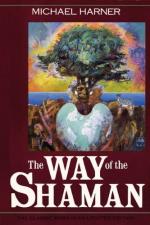
|
| Name: _________________________ | Period: ___________________ |
This test consists of 5 short answer questions, 10 short essay questions, and 1 (of 3) essay topics.
Short Answer Questions
1. What is the most famous method of acquiring a guardian animal spirit?
2. Harner writes in Chapter 5 that power helps a person resist or dispel what?
3. Some creation myths show with the passage of time, only shamans could:
4. After the power animal in the Lowerworld alerts the shaman that it is ready to accompany him or her, what is the shaman supposed to do?
5. How many guardian animals does a person have in a lifetime?
Short Essay Questions
1. Why should a shaman avoid trying to heal when he or she is feeling dis-spirited?
2. In the power restoration exercise presented to the reader in Chapter 5, what typically happens when the participant goes through the tunnel and reaches the Lowerworld?
3. Describe what the author says about being able to restore power to a patient from a distance.
4. How do the Jivaro know if a person has or doesn't have a guardian animal spirit?
5. What does Harner say about shamanism and synchronicity?
6. What is a vision quest?
7. What does Harner recommend for novice shamans trying to communicate with guardian spirit animals?
8. Explain what the author is saying when he speaks of Coyote and Raven as groups or species.
9. Give a brief summary of the exercise the author presents to the reader on how to dance one's animal guardian spirit.
10. What is the bone game?
Essay Topics
Write an essay for ONE of the following topics:
Essay Topic 1
Explain the purpose of the shaman working with the following conditions or tools:
1. In total or partial darkness.
2. With drumming, chanting, and rattles.
3. Using plants.
Essay Topic 2
Find contemporary similarities to the following scenarios and, for each one, draw comparisons between the shamanic practice and its contemporary counterpart:
1. A shaman consults with his or her animal guardian.
2. A shaman refrains from healing when he or she feels dis-spirited.
3. A shaman relies on synchronicities to determine whether or not he or she is on the right track.
Essay Topic 3
Define, compare, and contrast the shamanic state of consciousness (SSC) and the ordinary state of consciousness (OSC).
|
This section contains 956 words (approx. 4 pages at 300 words per page) |

|




